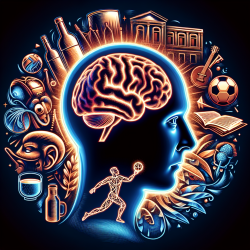Introduction
In the realm of speech-language pathology, practitioners are constantly on the lookout for innovative approaches to enhance therapeutic outcomes. One such avenue is the interdisciplinary field of ethnobiology, particularly as it is practiced in Southeast Asia. A recent study, "Ready for phase 5 - current status of ethnobiology in Southeast Asia," sheds light on how ethnobiological research can inform and improve speech therapy practices, especially in diverse cultural settings.
The Ethnobiology-Speech Therapy Connection
Ethnobiology, which explores the relationship between human cultures and natural environments, offers valuable insights into the cultural and linguistic diversity that speech therapists often encounter. The study highlights the rich tapestry of biocultural diversity in Southeast Asia, where a multitude of indigenous languages and cultural practices coexist. This diversity is crucial for speech therapists to consider, as it impacts language acquisition and communication styles.
Key Findings from the Research
- Biocultural Diversity: The study emphasizes the importance of understanding the biocultural diversity in Southeast Asia. With over 300 indigenous languages and numerous ethnic groups, the region serves as a living laboratory for studying language and communication in diverse cultural contexts.
- Interdisciplinary Collaboration: The research calls for increased interdisciplinary collaboration, which is essential for addressing complex issues like language disorders in multicultural settings. Speech therapists can benefit from collaborating with ethnobiologists to develop culturally sensitive therapeutic approaches.
- Phase 5 Ethnobiology: The study introduces the concept of "Phase 5" ethnobiology, which focuses on interdisciplinary research and addressing contemporary environmental and cultural crises. This approach can be adapted to speech therapy by integrating cultural and ecological considerations into therapeutic practices.
Implications for Speech Therapy
By incorporating the findings from ethnobiological research, speech therapists can enhance their understanding of the cultural nuances that influence communication. This can lead to more effective and personalized therapy plans. Here are some practical steps for speech therapists:
- Cultural Competence: Develop a deeper understanding of the cultural backgrounds of clients. This includes learning about their native languages, cultural practices, and communication styles.
- Interdisciplinary Approaches: Collaborate with ethnobiologists and other professionals to gain insights into the cultural and ecological factors affecting communication disorders.
- Customized Therapy Plans: Design therapy plans that are tailored to the cultural and linguistic needs of each client, ensuring that interventions are relevant and effective.
Encouraging Further Research
The study underscores the need for more research in the intersection of ethnobiology and speech therapy. Practitioners are encouraged to explore this field further, as it holds the potential to revolutionize therapeutic practices. By understanding the intricate connections between culture, language, and environment, speech therapists can better serve their clients and contribute to the preservation of linguistic diversity.
To read the original research paper, please follow this link: Ready for phase 5 - current status of ethnobiology in Southeast Asia.










